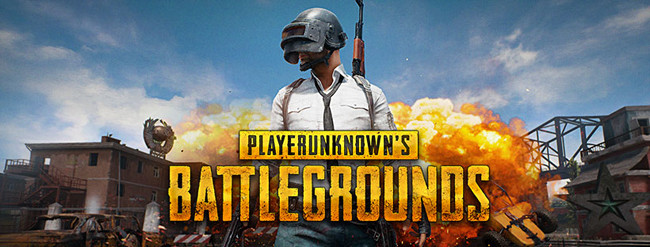PlayerUnknown’s Battlegrounds
A Hunger Games-esque battle royale survival game, online shooter PlayerUnknown’s Battlegrounds tasks players with a single objective: stay alive until you’re the last player standing. Each match begins with 100 players dropping out of an airplane onto a giant landmass packed with towns, farmlands, mountains, and forests – immediately thereafter, players begin fending for their lives, collecting as much gear, weaponry, and stat-enhancing items as they can find while simultaneously fending off nearby foes. As the size of the play area gradually shrinks, the number of players who remain similarly dwindles. Eventually, typically after dozens of high-stakes encounters and gunfights, only one player remains: the sole victor of the match.
Despite containing only one game mode and a small handful of maps, PUBG has achieved incredible success since its March 2017 release – which begs the question: why?
In my experience, PlayerUnknown’s Battlegrounds excels in encouraging players to develop and refine their survival skills through repeated failure – a concept famously defined as having a “growth mindset” by psychologist Dr. Carol Dweck. Through dying over and over again, players are forced to try new tactics, fail, then try again, repeating the process until they have mastered the skills necessary to achieve success. PUBG famously offers players no tutorial mode – players are expected to embrace failure as part of the game’s experience, learning from each death and jumping right into the next game. Put simply, failure is part of the fun!

Written by Marketing Assistant James LaPierre. Developed by BlueHole, PlayerUnknown’s Battlegrounds is available for Microsoft Windows and Xbox One.
SUPERHOT VR
Back in 2016, SUPERHOT did something that a lot of people at the time had written off as impossible – namely, it added new ideas to the first-person shooter genre. In this novel experience, where “where time moves only when you move,” I found a sticky, compelling hybrid of shooter and puzzle mechanics, where finding the correct choreography for your actions served as the puzzle. Little did I know that only one year later, the folks at SUPERHOT Team would find a way to make Superhot even more compelling – enter SUPERHOT VR. Rather than navigating a level, the player in SUPERHOT VR stays in one place, ducking, dodging and countering waves of attackers. Even though you’re relatively stationary, it’s anything but limiting.
Through SUPERHOT VR, I found myself in a master class about the “embodiment” element in Dan White’s theory of How VR Changes Learning. As an “embodied” act, disarming an opponent and dispatching them with their own weapon is tremendously satisfying. It’s also more exhausting – I did a lot of super squats playing SUPERHOT, and found myself rather wobbly the next day. But don’t let that put you off! Most true VR believers will tell you that you have to experience it yourself to really get it, and SUPERHOT VR is no exception – if you’ve ever wanted to feel like a superhuman action movie star, this game is for you.

Written by Director of Marketing and Outreach Brandon Pittser. Developed by SUPERHOT Team, SUPERHOT VR is compatible with Oculus Rift, HTC Vive, and Playstation VR headset devices.
Pyre
Failure doesn’t mean reset.
Supergiant’s latest game Pyre teaches its players that while failure carries consequence, failure is also part of a narrative trajectory – rather than a point at which to quit, reload a save, and pretend it never happened.
Players lead a triumvirate of outcasts who seek to claim victory in a series of challenges, or Rites, against other triumvirates in an effort to absolve themselves of exile. The catch is that there are only a limited number of “Liberation Rites” – a special Rite allowing a single member of the winning team to return from exile. To fail a Liberation Rite is to both deny a member of your triumvirate freedom while granting it instead to a member of the opposing team.
It’s an interesting reminder that every victory is a defeat for another, but more importantly, Pyre teaches players that failure doesn’t have to be a hard stop and reset. Numerous characters express romantic/platonic interest in opposing teams and will plea that they themselves never be liberated. Others confide in you, expressing that they are relieved at failure as now equally deserving individuals have a chance to be free. At the game’s conclusion, players are treated to an epilogue for each character and, without failure, only a limited set of narratives are revealed; to fail in Pyre is to discover more about the world.
While most games teach that failure should be met with more attempts until proven competency, Pyre explores the idea that failure is not strictly a negative experience, but simply a different experience with its own rich lessons, perspectives, and stories.

Written by QA Associate Nell Farrell. Developed by Supergiant Games, Pyre is available for Microsoft Windows, Linux, MacOS, and Playstation 4.